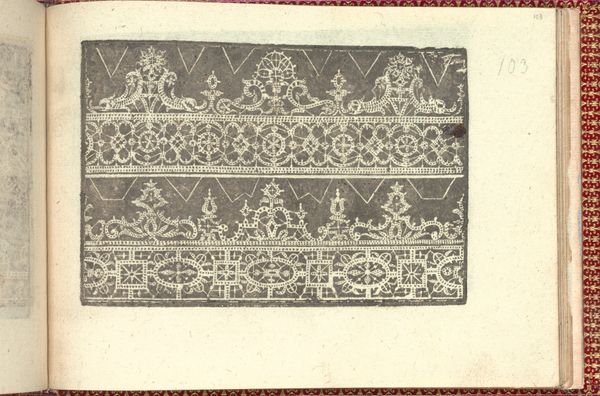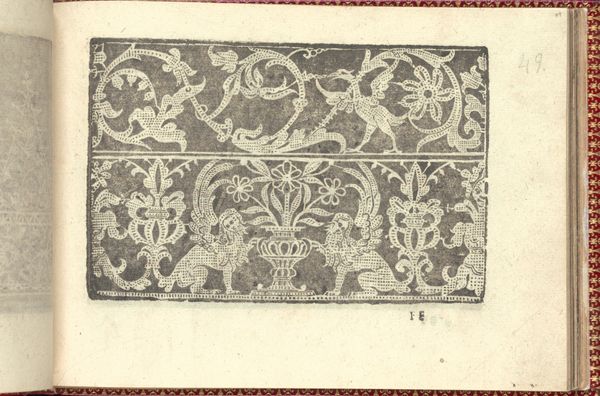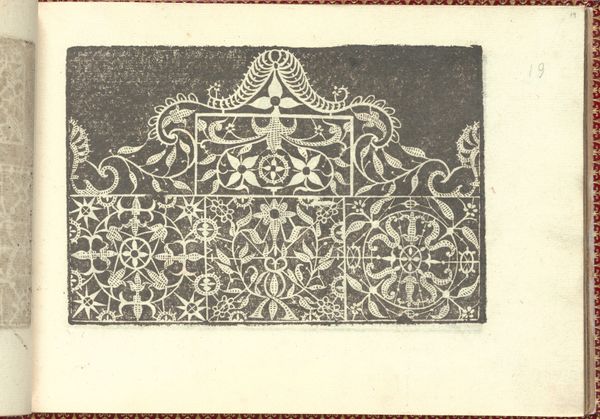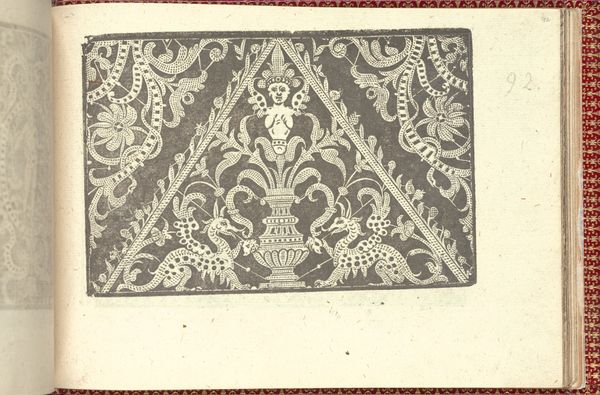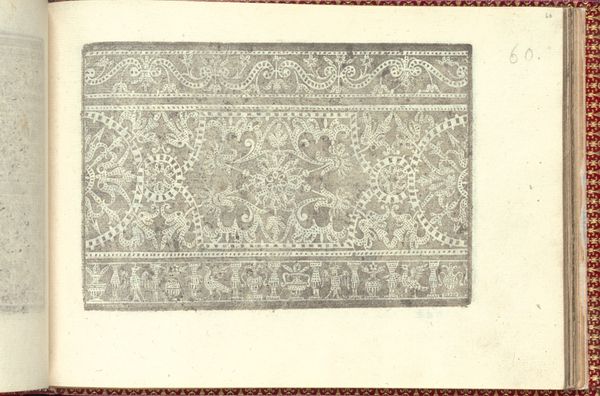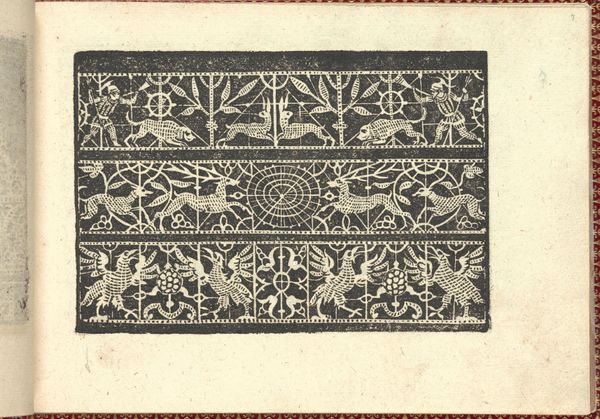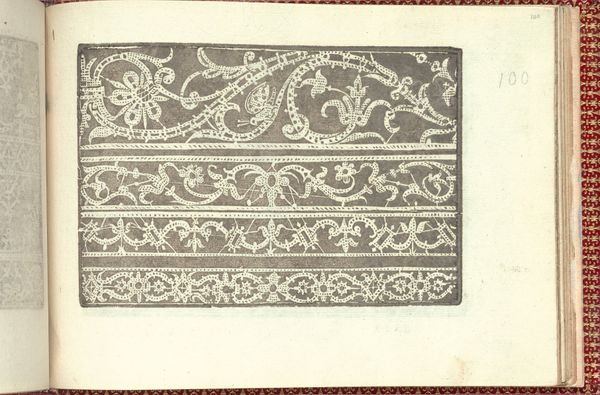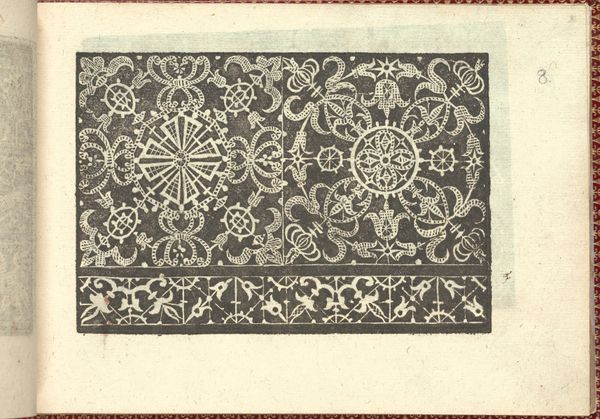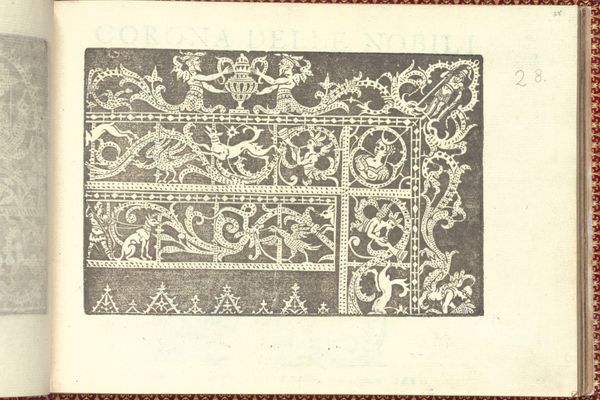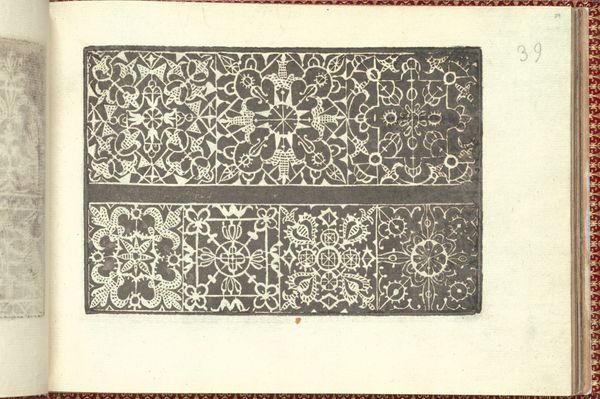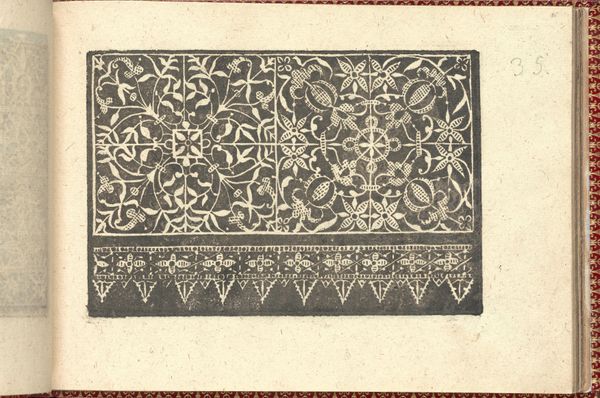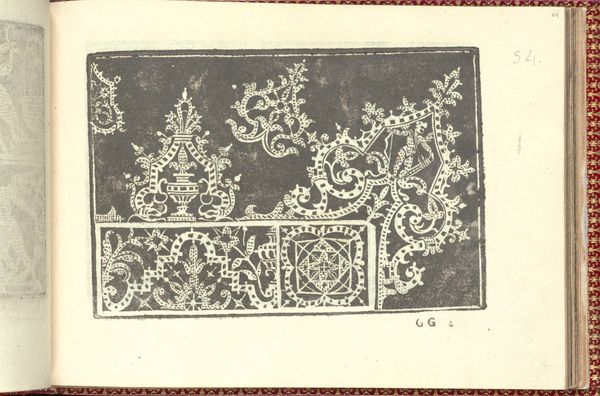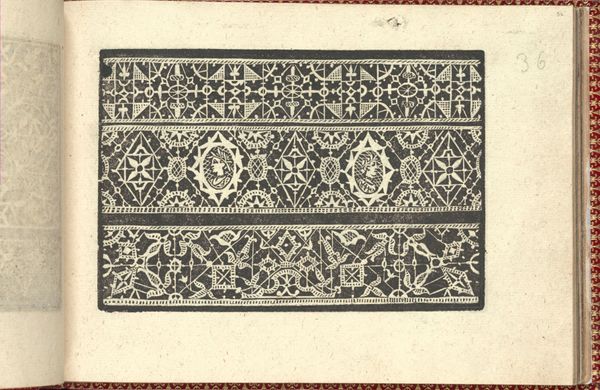
Corona delle Nobili et Virtuose Donne: Libro I-IV, page 51 (recto) 1601
0:00
0:00
drawing, print, engraving
#
drawing
# print
#
book
#
11_renaissance
#
coloured pencil
#
geometric
#
decorative-art
#
engraving
Dimensions: Overall: 5 1/2 x 7 11/16 in. (14 x 19.5 cm)
Copyright: Public Domain
Curator: The level of detail in this print is striking! Editor: It feels so precise, like a blueprint for a bygone craft, almost severe in its dedication to form. Curator: I agree. What we’re observing is a page from Cesare Vecellio’s *Corona delle Nobili et Virtuose Donne*, created in 1601. It's a combination of engraving and drawing showcasing designs intended for lace-making. Editor: "Of Noble and Virtuous Women" - framing craft as an avenue for expressing virtue and nobility... It's loaded with social commentary, isn’t it? Lace-making, often relegated as 'women's work', is being elevated, but also confined within these very rigid boundaries. Curator: Precisely. Note how the geometric patterns dominate – strict repetitions, sharp angles. Look at the relationship between the design elements—a central motif anchors each frieze and creates visual rhythm. There is such emphasis on the precision. Editor: That rigid precision contrasts ironically with the purpose of lace itself – used to soften clothing, adorn edges. We are essentially freezing and framing what should flow and shift with the wearer. It hints at constraints. What stories might it conceal? Curator: True. Perhaps Vecellio captures both the technical artistry of lace design and the societal constraints of its makers through his structured design. Each page operated both as a sourcebook for artisans and as a statement on social structure. Editor: These motifs also circulated around Europe as a kind of global language – lace patterns acted as blueprints for exchange, a way to connect communities of makers even from a distance, or without shared language. They become vessels carrying techniques, skills, artistry, maybe resistance between cultures, if we are able to examine how techniques were absorbed or appropriated through time and place. Curator: These decorative arts offer unique opportunities to think about the structures shaping material culture. The beauty in the intricacy certainly compels close viewing! Editor: Yes, seeing craft elevated this way allows us a portal to examining both individual agency and broad power dynamics, simultaneously. A vital act of cultural preservation that inspires curiosity about social structures across place and time!
Comments
No comments
Be the first to comment and join the conversation on the ultimate creative platform.
